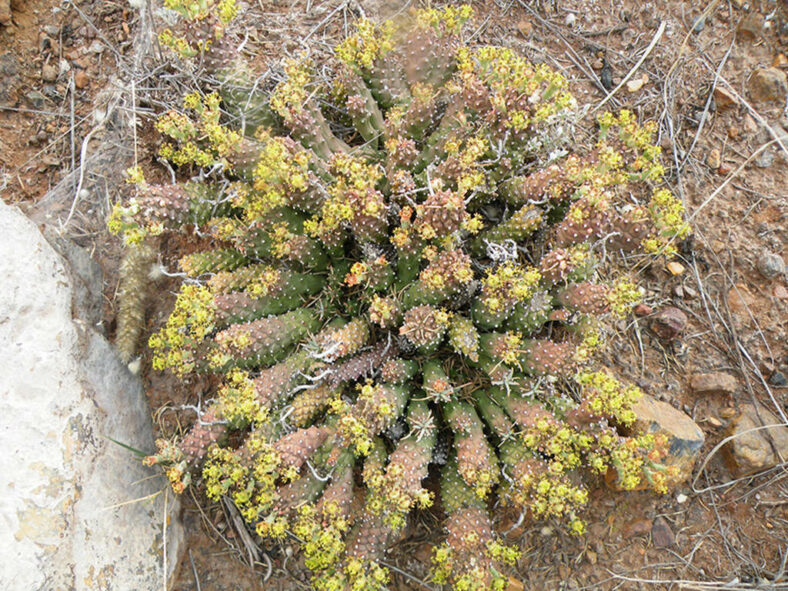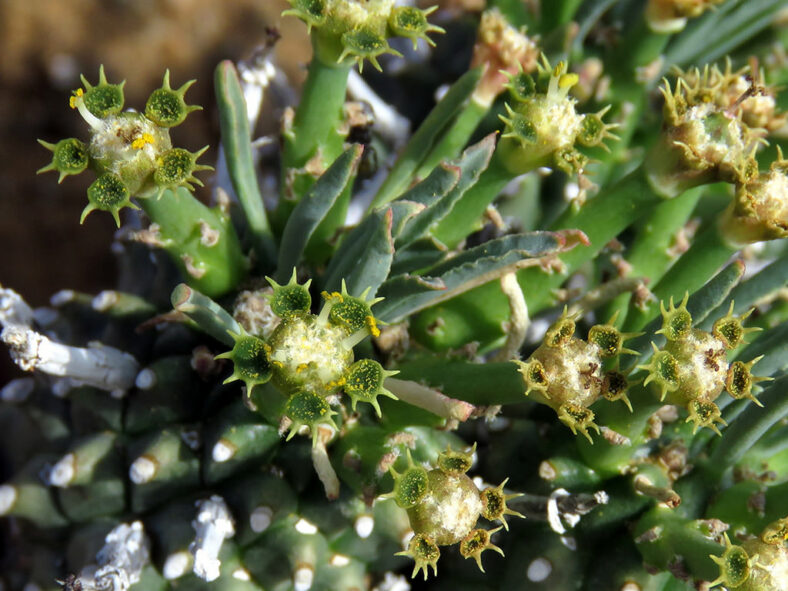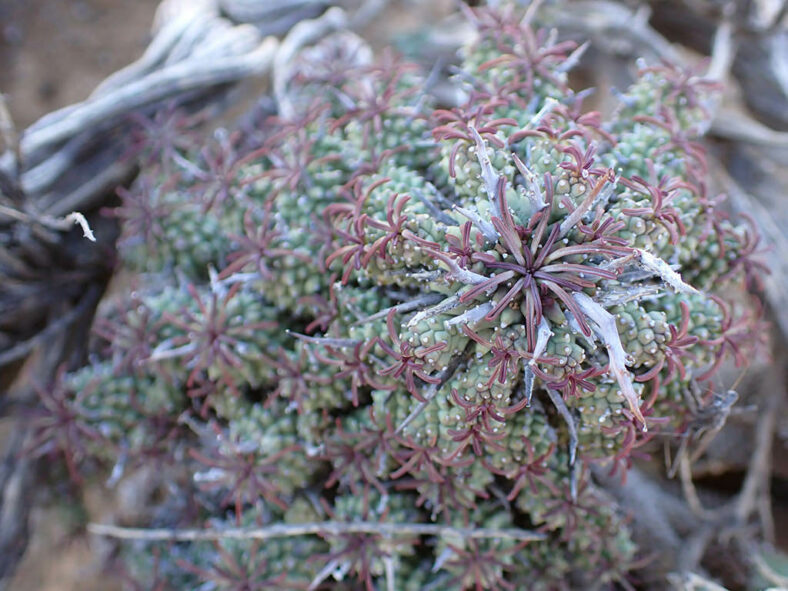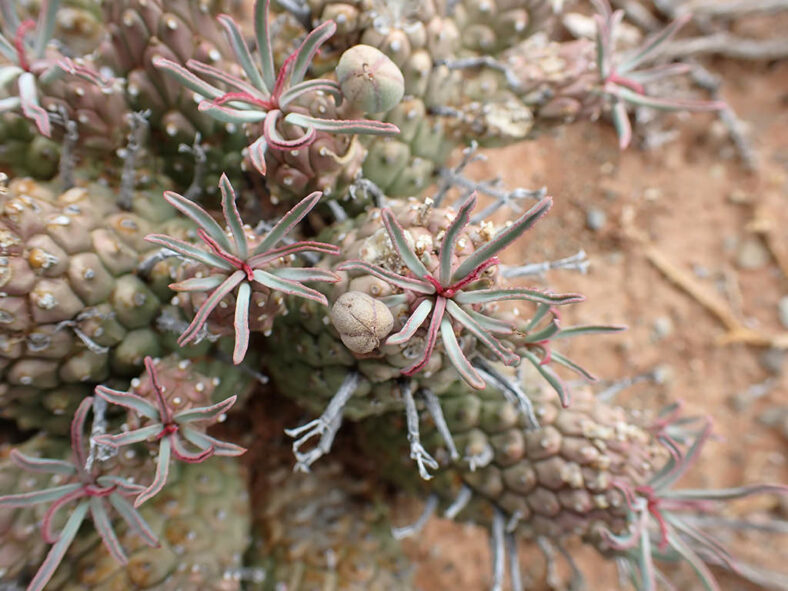Euphorbia braunsii was first described by Nicholas Edward Brown and published in Flora Capensis in 1915.
Scientific Name
Euphorbia braunsii N.E.Br.
Synonym(s)
Euphorbia marientalii, Euphorbia rangeana, Euphorbia rudis
Scientific Classification
Family: Euphorbiaceae
Subfamily: Euphorbioideae
Tribe: Euphorbieae
Subtribe: Euphorbiinae
Genus: Euphorbia
Etymology
The specific epithet "braunsii" (pronounced BRAUN-see-eye) honors Dr. R. Brauns, who discovered the species in 1911.
Origin
The native range of Euphorbia braunsii extends from Mariental in south-central Namibia to Prince Albert in the Western Cape province of South Africa. It grows on loamy to stony flats among scattered bushes.
Description
Euphorbia braunsii is a small succulent plant with numerous gray-green branches that are densely crowded on the upper part of a stout stem. The plant can grow up to 6 inches (15 cm) tall and 10 inches (25 cm) in diameter. The branches are ascending, simple or sparingly branched, cylindrical in shape, and covered with flattish tubercles that are 4– to 6-angled, and each has a slightly prominent white leaf scar. They thicken upwards and can reach a length of up to 4 inches (10 cm) long and a diameter of 1.2 inches (3 cm). The leaves are linear, soon fall off, and can measure up to 0.6 inches (1.5 cm) long.
From late winter to early fall, Euphorbia braunsii produces many cyathia around the tips of the branches. Each cyathium is on an often persistent peduncle in the axil of the tubercle and can reach a diameter of 0.25 inches (0.6 cm). The cyathia have five green to brown glands, each with 2 to 4 fine processes on the outer margins. The fruits are occasionally pubescent capsules growing up to 0.25 inches (0.6 cm) in diameter.

How to Grow and Care for Euphorbia braunsii
Light: For optimal growth, Euphorbia braunsii needs plenty of sunlight. During the warmer months, place it near a sunny window or move it to your balcony or garden, gradually increasing sun exposure to avoid sunburn.
Soil: Use a well-draining soil, either a commercial potting mix formulated for succulents or create your own well-draining soil.
Temperature: While high summer temperatures are not a problem, low winter temperatures can damage or kill your plant. Euphorbia braunsii grows best in USDA Plant Hardiness Zones 10a to 11b, with average minimum winter temperatures ranging from 30 to 50 °F (-1.1 to 10 °C).
Watering: From spring to fall, water the plant when the soil's top inch (2.5 cm) feels dry. Reduce watering in winter and give it just enough water to prevent wilting. In the warm season, evening is the best time of the day for watering.
Fertilizing: To ensure the potted plant receives sufficient nutrients, apply a balanced fertilizer in a 10-10-10 NPK formulation, diluted to 1/4 strength weekly during the growing season.
Repotting: Although your Euphorbia braunsii does not need to be repotted often, it will benefit from repotting when it outgrows its pot. The repotting is best done in early spring at the beginning of the growing season. Wear gloves, protective clothing, and appropriate eye protection when handling this plant.
Propagation: The easiest and quickest way to propagate this plant is by stem cuttings. Although it can be started from seeds, it can be difficult for them to germinate. Take cuttings during the growing season, while spring is the best time for sowing the seeds.
Learn more at How to Grow and Care for Euphorbia.
Toxicity of Euphorbia braunsii
Euphorbia braunsii produces a poisonous white milky sap that may cause burns or irritation if it comes into contact with the skin or eyes. Therefore, it is best to keep this plant away from children and pets.
Links
- Back to genus Euphorbia
- Succupedia: Browse succulents by Scientific Name, Common Name, Genus, Family, USDA Hardiness Zone, Origin, or cacti by Genus
Photo Gallery
Click on a photo to see a larger version.


